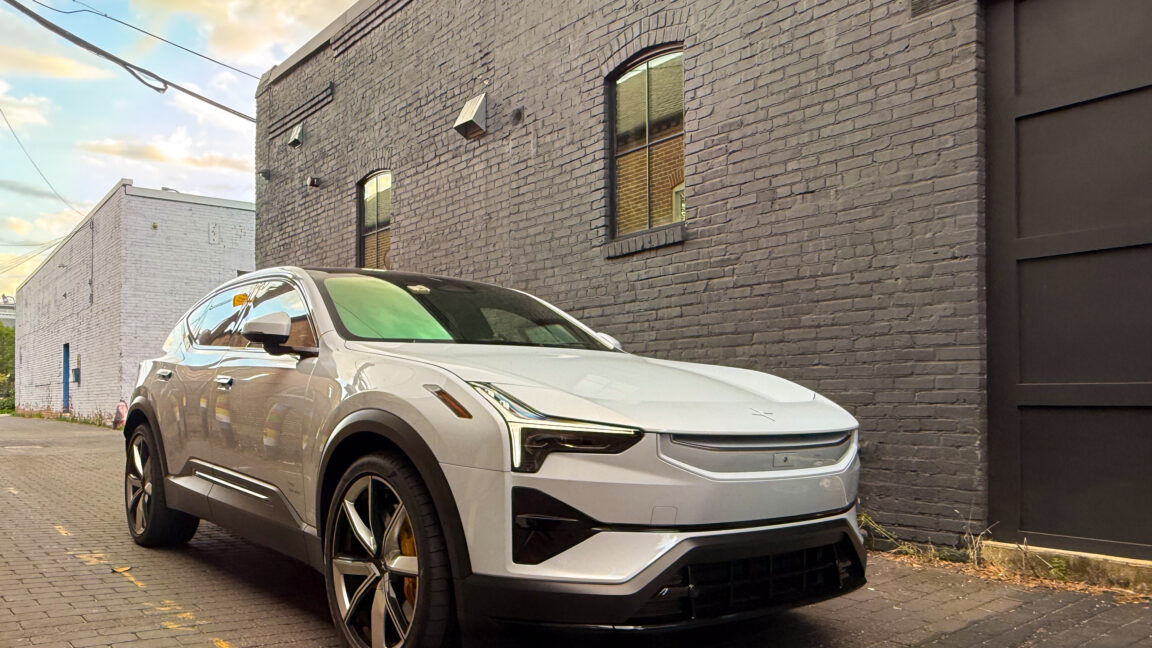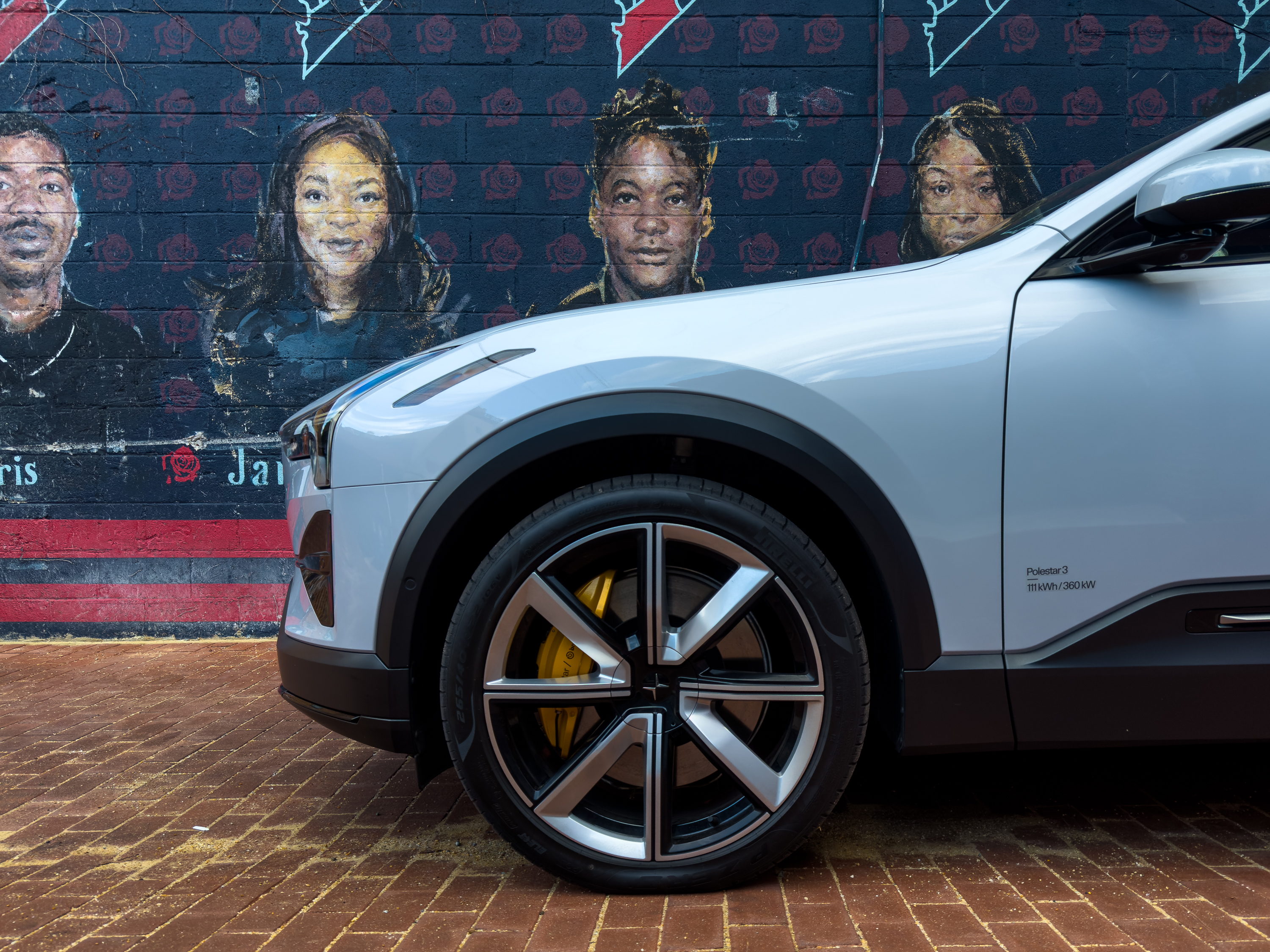
Credit: Jonathan Gitlin
Earlier this month, Ars took a look at Volvo’s latest electric vehicle. The EX90 proved to be a rather thoughtful Swedish take on the luxury SUV, albeit one that remains a rare sight on the road. But the EX90 is not the only recipe one can cook with the underlying ingredients. The ingredients in this case are from a platform called SPA2, and to extend the metaphor a bit, the kitchen is the Volvo factory in Ridgeville, South Carolina, which in addition to making a variety of midsize and larger Volvo cars for the US and European markets also produces the Polestar 3.
What’s fascinating is how different the end products are. Intentionally, Polestar and Volvo wisely seek different customers rather than cannibalize each other's sales. As a new brand, Polestar comes with many fewer preconceptions other than the usual arguments that will rage in the comment section over just how much is Swedish versus Chinese, and perhaps the occasional student of history who remembers the touring car racing team that then developed some bright blue special edition Volvo road cars that for a while held a production car lap record around the Nürburgring Nordschliefe.
That historical link is important. Polestar might now mentally slot into the space that Saab used to occupy in the last century as a refuge for customers with eclectic tastes thanks to its clean exterior designs and techwear-inspired interiors. Once past the necessity of basic transportation, aesthetics are as good a reason as most when it comes to picking a particular car. Just thinking of a Polestar as a brand that exemplifies modern Scandinavian design would be to sell it short, though. The driving dynamics are just too good.
High praise
In fact, if there’s another brand out there that might be starting to pay attention to the way Polestars drive, it should be Porsche. Bold words indeed. Often, dual-motor EVs have one motor rated as more powerful than the other, or perhaps even of different designs. But the long-range dual motor Polestar 3 (MSRP: $73,400) is fitted with a pair of identical 241 hp (180 kW), 310 lb-ft (420 Nm) permanent magnet motors. The drive units are not entirely identical, however—at the rear, clutches on either side allow for true torque vectoring during cornering, as well as disconnecting the rear axle entirely for a more efficient mode.
Outside of range mode, you can expect the rear motor to provide most of the motive force, and when coupled with rather quick steering and dual-chamber adaptive air suspension, the Polestar 3 feels very nimble, despite a curb weight that can get as high as 5,783 lbs (2,623 kg). Performance mode makes things a bit more rapid, with 0–60 mph being dispatched in 4.8 seconds. Going quickly isn’t the Polestar 3’s problem, and its Brembo brakes are more than up to the job of slowing it once the regenerative braking threshold has been passed.
On the other hand, it has been one of the least friendly EV’s I’ve driven lately when it comes to the low speed stuff. For life around the neighborhood, a good EV ought to be happy cruising at 20–25 mph (30–40 km/h), making that weird sad angel noise it's legally required to make. This might be user error, because perhaps spending more time in Range mode might have helped, but this Polestar 3 did not seem to take naturally to a more sedate pace of life. The Polestar 3 betrays its Swedish roots at times with overeager collision warnings, so at least you know its ADAS is on the lookout for trouble.

Big wheels mean less range.
Credit: Jonathan Gitlin
Between the motors, below the cabin, lives the 111 kWh battery pack, which operates at 400 V. While the EPA range estimate comes in at 315 miles (506 km), that’s with the smallest wheel option. Our test car—in fact a Launch Edition, with the Pilot and Plus packs, also came with 22-inch wheels that look anything but low-drag. As a result, its real-world range was closer to 280 miles on a full charge in warm weather. Fast charges take about 30 minutes from 10 to 80 percent state of charge, with peak charge rates of 250 kW. For model year 2025, expect a CCS1 charge port.
Pain points
Although I appreciate the way the Polestar 3 rewards a keen driver, life with the SUV could be frustrating. Running on Android Automotive OS with Polestar’s UI on top, the software was more mature than when we first sampled it, but it still threw a random fault that thankfully went away with a software update.
Owners can—and should—use their phone as the car key, but since that isn’t an option for the press fleet cars, I had to rely on a little box-like key that constantly needs to be placed on the wireless charging pad to prevent the car from freaking out. Unhelpfully, there are no lights or any other kind of display on the key box that could tell you if it’s charged or not. It took longer than I’d like to admit before I was completely comfortable opening the door with the key box, too—hold it on the wrong part of the handle and nothing happens.
And while I mostly praise the interior, on bright days, the sun can glare off the chrome trim through the panoramic glass roof. But at least the car has some of the best massaging seats I’ve encountered in a while.
Early Polestar 3s, like our press car, were imported from the company’s Chinese factory, but local production got underway in South Carolina late last year, so they should have less exposure to the ongoing trade war. A healthy offering of manufacturer incentives is always helpful, too, and it’s unlikely that a BMW dealer would let you take home an iX for as little as you can probably negotiate to on a Polestar 3. It’s that or a used hybrid Cayenne.

-
 C114 Communication Network
C114 Communication Network -
 Communication Home
Communication Home


